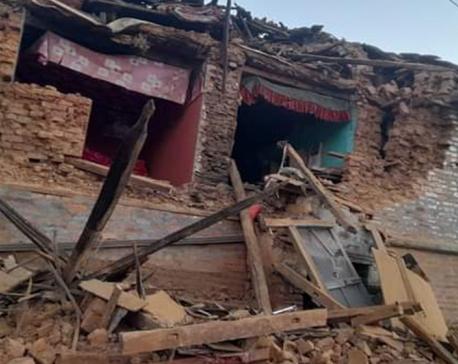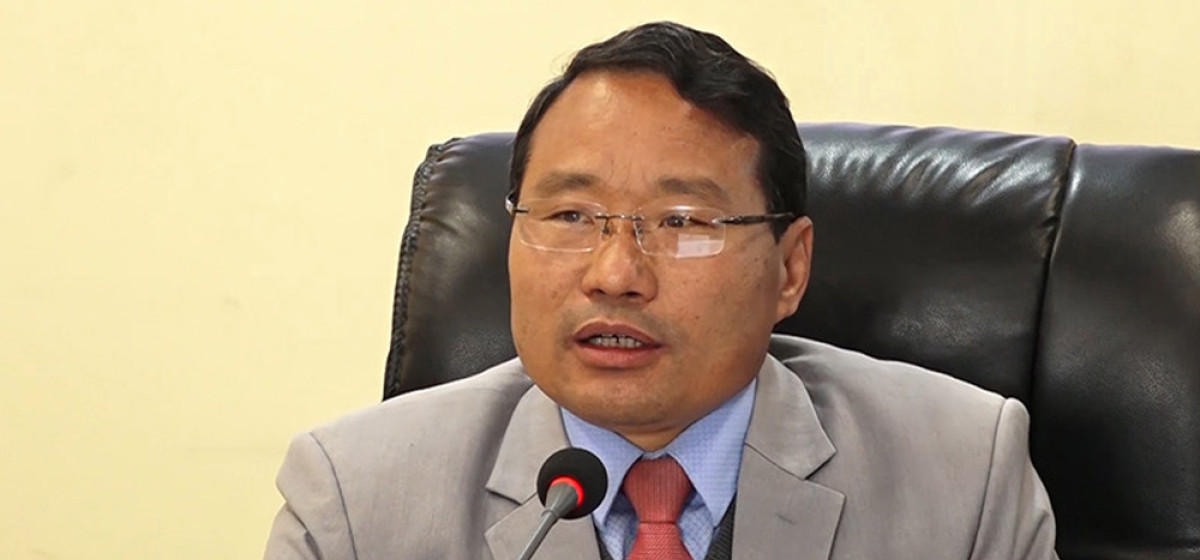
OR
Opinion
Tibetan Refugees’ Seven Decades in Foreign Lands
Published On: May 5, 2023 09:00 AM NPT By: Hari Prasad Shrestha

More from Author
- Why Federalism has Become Risky for Nepalese Democracy
- Hunger is a Serious Problem in South Asia
- Tourism Can Be A Catalyst For Change in Karnali Province
- Nepal’s Southern Border Has Become An Open Regional Crossroads
- Opening a new gateway for Kailash Mansarovar Yatra through Nepalgunj-GunshaNagari flight
The film, ''Seven Years in Tibet,'' (1997) was based on an autobiographical account by Heinrich Harrer, the Austrian, now 84, about his escape from a British internment camp in India and his trek across the Himalayas to Tibet, where he tutored the 11-year-old Dalai Lama, the spiritual leader. Mr. Harrer left Tibet in 1951, shortly after China overran the kingdom, and has remained friends with him. The Dalai Lama plunged into controversy over the revelation that the Austrian had a Nazi past.
''Seven Years in Tibet'' is one of two films about the Dalai Lama that have angered China's Government. The other project, ''Kundun'' (''Presence''), (1997) directed by Martin Scorsese, about the life of the Dalai Lama, was released by Disney. After the release of the film, former Disney CEO Michael Eisner apologized for offending Chinese sensitivities, calling the film "a stupid mistake." He went on to say, "The bad news is that the film was made; the good news is that nobody watched it.
Tibetan refugees arrived in Nepal in the early 1950s; the first major influx crossed the border in 1959, following the Lhasa Uprising. Thousands of Tibetans fled to Nepal by crossing the Himalayas and have settled in different refugee camps, cities and villages in Nepal.Tibetan refugees have also settled in India by hundreds of thousands. The Tibetan spiritual leader, the Dalai Lama, and many of his followers fled to the northern Indian town of Dharamsala. A considerable number of Tibetans have been also permanently settled as citizens of the US and the European countries. The Cultural Revolution is the name given to Mao’s attempt to reassert his beliefs in China.
Over the past two decades, around three-quarters of the refugees who arrived in Nepal to enter India were from the Kham or Amdo regions of eastern Tibet (now primarily incorporated into the Chinese provinces of Qinghai, Gansu, Sichuan, and Yunnan)
Such Tibetans consider breaching the Indian and Nepalese boundaries’ rules as a great conquest of their life. They have a strong frame of mind and only physiologically and psychologically strong people can achieve the goal of boundary crossing. Going on foot months covertly over trials was not an anecdote; the questions of verve and trouncing the odds were attached with such travels. There were equal chances of success and failure. They proceed many times without food and water through uninhabited mountains, even off the trail because of the fear of being detained. If anyone falls ill on the route, they must continue their journey in such conditions, too. Sometimes they sleep under the open sky of freezing and cold wind. An ordinary person over or under age can hardly trek on those trails. For those who escaped and crossed the border, the pain of losing an identity can be observed on their faces. To become a people without a nation appears to be very sentimental, with an uncertain future.
In India, the Tibetan diaspora maintains a government in exile in Himachal Pradesh, which coordinates political activities for Tibetans in India. Around 120,000 refugees remain in India today. Tibetan refugees who have arrived or will arrive in Nepal after 1989 have been allowed to stay only for transit and are intended to benefit from an informal agreement between the government of Nepal and the UNHCR, often referred to as the Gentlemen’s Agreement, which assumes cooperation among Nepalese police and government officials with the UNHCR providing for the safe transit of Tibetan refugees through Nepal towards India, which has greatest number of Tibetan refugees.
Tibetan refugees have been successfully rehabilitated and resettled in Nepal and India. However, they are confronted with a series of new challenges such as- educated but unemployed Tibetan youth, and difficulties of traveling abroad for studies, visiting relatives and other social engagements.
The Government of India issues an “Identity Certificate” (IC) for Tibetans, who arrive there as refugees. Apart from procuring the IC, they are also required to apply for a permit to exit the country as well as for re-entry so that they could come back to India. Tibetans with this travel document have encountered problems with immigration officials at various airports as many officials are unfamiliar with this kind of travel document.
In September 2016, the Delhi High Court ruled that Tibetans born in India between 1950 and 1987 are eligible to apply for Indian passports. Soon after, the decision of Delhi High Court allowed people to apply for Indian passports, the Government of India soon added riders to this policy in June 2017. It listed the following four conditions for Tibetans seeking Indian citizenship: 1) they are required to get their Registration Certificate (RC), and Identity Certificate canceled; 2) they should not be staying in designated Tibetan refugee settlements; 3) they should submit an undertaking that they no longer enjoy the benefits offered by the Tibetan government-in-exile; and, 4) they should submit a declaration that they no longer enjoy any privileges, including subsidies, by virtue of being RC holders.
Some argue that having an Indian passport could not be subject to minimizing the Tibetan issue and say it could weaken CTA’s control over Tibetans. Many Tibetans, however, did not give up hope. “Nations rise up and down — that is happening everywhere. Britain ruled India for 200 years. China was once under the rule of Tibetans,” they say.
Being the southern neighbor of China, Nepal must bear the influx of Tibetan refugees. In 2007, a senior official of the United States had raised the issue of Tibetan refugees with Nepalese Prime Minister Girija Prasad Koirala on the resettlement of 5,000 Tibetan refugees out of 20,000 residing in Nepal, but the issue did not progress.
During the same time, the third country resettlement program was launched for Bhutanese refugees in Nepal, and nearly 111,000 have been settled in various western countries, with the US alone getting more than 90,000 of them. These Tibetans are said to be living in Nepal without any proper legal papers. Some Tibetans in Nepal find it difficult to understand why the Nepalese Government is willing to allow resettlement of Bhutanese refugees and not Tibetans.
In Nepal, Boudhanath stupa in Kathmandu city is considered to be a mini-Tibet where hundreds of Tibetans are seen worshiping in a Buddhist monastery. This monastery is the center place of agitation when unrest starts in the Tibetan communities. Similarly, Dharamsala is a city in the Kangra Valley in India, where Tibetan refugees have been settled. The town of McLeod Ganj in Upper Dharamsala is known worldwide for the teachings of the Dalai Lama.
Despite some incidents, the Government of Nepal has shown great generosity and sympathy toward Tibetans by providing them temporary asylum and other necessary assistance. On the one hand Nepal must comply with the international obligations it has committed in the international forum, and on the other hand, Nepal is not in a position to take excess risk of unfriendliness with neighbors regarding refugee issues. However, in India the Tibetan refugees’ settlements seem to be more strategic than purely subject of refugees on humanitarian grounds. Tibetan refugees in India and Nepal have been living for seven decades and they are considered to be one of the longest living refugees in the foreign lands with an uncertain future.
You May Like This

Navigating the Digital Diplomacy Divide: Balancing Tradition and Technology in Global Relations
In an era marked by changing world order, climate change, a weak global economy, escalating conflicts, and profound human suffering,... Read More...

Evidence-Based Policy Making in Nepal: Challenges and the Way Forward
“Life and health can never be exchanged for other benefits within the society.” With this vision, the Swedish Parliament in... Read More...

Nepal's Seismic Struggle and Ongoing Recovery Dynamics
Nepal's seismic vulnerability is highlighted by its history of frequent and devastating earthquakes. Over the past 52 years, from 1970... Read More...





Just In
- Fugitive arrested after 26 years
- Indian Potash Ltd secures contract to bring 30,000 tons of urea within 107 days
- CAN adds four players to squad for T20 series against West Indies 'A'
- ‘Precast' technology introduced in the construction of bridges along Muglin-Pokhara road
- Leopard attack injures young man in Kanchanpur
- SC rejects writ petition filed against Home Minister Lamichhane
- Nepal and China sign two agreements in the presence of Finance Minister Pun
- Pun released on bail in Supreme Cooperative fraud case















Leave A Comment